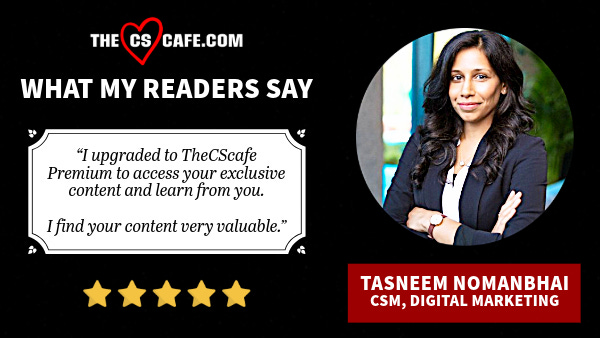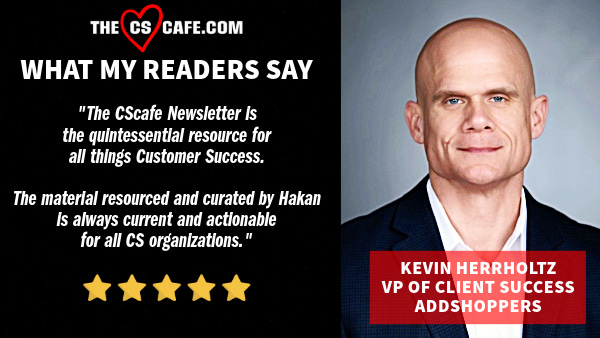Part 1/2: Why Split the Teams
Customer success is key to growth and retention in SaaS.
As companies grow, they often face a challenge:
Should they have separate teams for onboarding new customers and managing ongoing customer success?
And the decision can have a major impact on:
Customer satisfaction
Team efficiency
Overall business performance
So here are the pros and cons of splitting teams, with real-life examples and guidance on when and how to implement this change.
What is Customer Success?
First things first. A quick reminder:
Customer Success is a proactive approach to ensuring customers achieve their desired outcomes while using a product or service faster than if they had to do it themselves.
It goes beyond traditional customer service
It's all about driving long-term customer satisfaction, retention, and growth
For a more comprehensive understanding, check out my guide on what is customer success.
So Why Split the Teams?
The main reason for splitting these roles is that they require different skills:
Onboarding Specialists:
Focus on getting new customers started
Need to know the product inside and out
Help with initial setup and training
Customer Success Managers (CSMs):
Need to understand customer goals
Work on customer satisfaction long-term
Help customers get the most value from the product
Having separate teams helps each group become experts in their own area and execute in a more efficient way.
For more insights on the role of CSMs, read my ultimate guide for customer success managers.
Real-World Example: HubSpot's Success
HubSpot, a leading CRM platform, successfully implemented a split between onboarding and CSM teams:
Created a dedicated "Customer Onboarding Specialists" team
This team works closely with customers during the first 90 days
After onboarding, customers transition to long-term CSMs
This approach allowed HubSpot to provide more specialized support at each stage of the customer journey.
It resulted in higher customer satisfaction and retention rates.
Industry Trends
According to a study by TSIA:
Only 40% of companies have dedicated onboarding roles or teams
57% of customer success organizations have operationalized the customer journey
Organizations see a 26% improvement in ARR when onboarding and customer success align closely.
💡Reflection Question: How does your current team structure compare to these industry trends?
When to Consider Splitting
Several factors can help you decide if it's time to split these teams:
Product Complexity
If your product is technical, having a dedicated onboarding team might be helpful.
Number of Customers
As you get more customers, specialized teams can handle the workload better.
Company Size
Large enterprise customers can usually afford to have separate teams.
Different Focus Areas
Separating teams makes sense if there is a clear difference between getting started with the product and using it long-term.
For more insights, check out my guide on scaling customer success.
Benefits of Splitting Teams
Having separate onboarding and CSM teams can offer several advantages:
Better Expertise: Each team can focus on becoming great at their specific job.
Improved Efficiency: Dedicated teams can often solve problems faster.
Satisfied Customers: They get focused support at each stage of their journey.
Room to Grow: Separate teams can handle more customers and more complex products as the company expands.
To learn more about improving customer satisfaction, read my article on secrets to wow customers.
And There You Have It!
If you would like to explore more in detail, here's what I'm covering in Part 2 (exclusive to my Premium subscribers):
Deep Dive: Case Study on Scaling Customer Success
Learn how a mid-sized SaaS company successfully split their teams
Discover the measurable impacts on customer satisfaction and efficiency
Decision-Making Toolkit
Access my exclusive decision flowchart to check if splitting teams is right for your company
Use my simple scoring system to evaluate your company's readiness for team splitting
Overcoming Implementation Challenges
Practical solutions for common communication barriers between teams
Strategies to avoid overlap in responsibilities and maximize efficiency
Step-by-Step Guide: Evaluating Your Specific Needs
Detailed walkthrough on analyzing customer feedback, metrics, and workload
Financial analysis framework to calculate the ROI of splitting teams
Want to level up your knowledge and skills?
Upgrade to Premium and access exclusive additional insights my premium subscribers enjoy every week.
“I love the CS Café!” - Melissa Garcia, Director of Renewal Operations @ Chief
“I upgraded to The CS Café Premium to access your exclusive content and learn from you. I find your content very valuable” - Tasneem Nomanbhai, Customer Success Manager, Digital Marketing
“The CS Café Newsletter is the quintessential resource for all things Customer Success. The material resourced and curated by Hakan is always current and actionable for all CS organizations.” - Kevin Herrholtz, VP of Client Success, AddShoppers
Part 2/2: In-Depth Analysis and Practical Advice
(Exclusive to The CS Café Premium Subscribers)
Case Study: Scaling Customer Success
…






